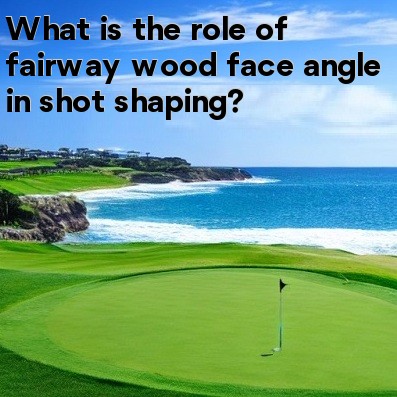
In golf, What is the role of fairway wood face angle in shot shaping?
Fairway woods are a crucial part of a golfer's bag, especially when it comes to reaching long distances from the fairway. One important factor that can greatly impact the outcome of a shot is the face angle of the fairway wood.
The face angle refers to the positioning of the clubface at address. It plays a significant role in determining the initial trajectory and flight of the golf ball. By manipulating the face angle, golfers can shape their shots and control the direction and curvature of the ball.
Understanding the role of face angle in shot shaping is essential for golfers looking to maximize control over their fairway wood shots and optimize their scoring potential. Here are three primary shot shapes that can be achieved by adjusting the fairway wood face angle:
- Straight Shot: When the face angle is square to the target line at impact, the ball will typically fly straight. Golfers aiming to hit a straight shot with a fairway wood should align the clubface directly at their target to minimize any side spin or curve.
- Draw Shot: A draw shot is typically used by golfers who want the ball to start slightly right of the target and curve back towards it. To achieve a draw shot, the face angle should be slightly closed (pointing left of the target for right-handed golfers) at address. This promotes a right-to-left side spin on the ball, resulting in the desired curve.
- Fade Shot: Conversely, a fade shot is used when golfers want the ball to start slightly left of the target and curve away from it. To execute a fade shot, the face angle should be slightly open (pointing right of the target for right-handed golfers) at address. This encourages a left-to-right side spin on the ball, causing the ball to curve in the desired path.
It is crucial to keep in mind that the face angle only determines the initial direction of the shot. Other swing elements such as swing path, clubface orientation at impact, and impact location will also affect the outcome of the shot.
Experimentation and practice are key to mastering the art of shot shaping with fairway woods. By making slight adjustments to the face angle, golfers can manipulate the flight of the ball and navigate around obstacles on the course, such as trees or hazards.
Furthermore, understanding the face angle of the fairway wood can also help golfers troubleshoot their shots. If a player consistently hits hooks or slices with their fairway wood, it may indicate an issue with their face angle at impact. Adjusting the face angle and observing the resulting ball flight can help identify and rectify the problem.
In conclusion, the face angle of a fairway wood is a powerful tool that allows golfers to shape their shots. By manipulating the face angle, golfers can hit straight shots, draw shots, or fade shots with relative ease. However, it is important to remember that shot shaping is a skill that requires practice and experimentation to achieve consistent and desired results.





